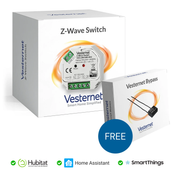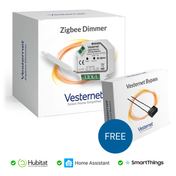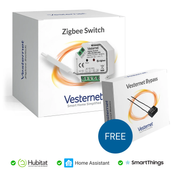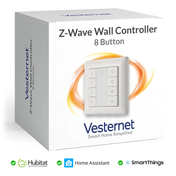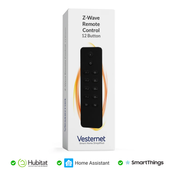Question
My device ran out of batteries after just a few days – what’s going on?
Answer
This is something we hear from time to time: you buy a Z-Wave Battery Powered device with a quoted battery live of say 2 years but then it rans out of batteries after just a few days.
First thing that may jump to mind is that the device is faulty but there are a few things to consider first.
Battery powered vs Mains powered
Mains powered devices are always awake and can therefor send and receive messages at all times. They are easy to configure after inclusion since they will receive all configuration commands and execute them immediately. This allows mains powered devices to act as repeaters in a Z-Wave network.
On the other hand the main purpose of a Battery powered device is to preserve battery power and only use as much power as needed. For that reason battery powered devices spend most of the time in a deep-sleep state.
In this state they don’t communicate with other devices – to do that they need to be woken up before the communication can take place. This can be done either Manually or by setting a Wakeup interval.
Wakeup Interval
This is likely the one setting with the biggest impact on battery life. Wakeup interval governs when a sensor wakes up and sends a specific Z-Wave message known as a Wake Up packet. Z-Wave controllers then use this information to send out any stored commands that might have been missed while the device was asleep.
Reducing the Wakeup means the device will receive changes more quickly, but will also reduce the battery life, so this needs to be a compromise between reaction time and battery life. You should set the Wakeup setting to something that fits in with how quickly you need the device to accept any queued commands.
For example it makes sense to have a Thermostat with a shorter wakeup interval so that it accepts setpoint changes in a timely manner. On the other a hand there’s probably no need for a Door Sensor to wakeup regularly – in fact you may decide that it’s worth to set its Wakeup interval to the highest possible value in order to maximize battery life.
FLiRS
FLiRS stands for Frequently Listening Routing Slave and is a recent technology deployed for Battery Powered Devices. It’s an interesting concept to allow Battery powered devices an “immediate” reaction to commands.
They should not be confused with sleeping devices - in fact they are more similar to Mains powered device. FLiRS devices check for new messages typically every second and go back to sleep – all this in a fraction of a second. They only listen and do not transmit so they still are very friendly to battery life.
Typical FLiRS devices are door locks or sirens that need to act immediately on a signal but still need the freedom to be placed anywhere. From the user point of view FLiRS devices will act like a normal mains powered devices – they will answer messages almost immediately.
It’s worth noticing that FLiRS devices don’t route Z-Wave messages though.
Quoted battery life vs real world
Estimated battery life can be tricky. Every manufactor performs their own test to back their products battery life claim. Of course these tests are done under “controlled circumstances”. Brand A can claim a Motion Sensor has a 2 years battery lifetime but that’s probably based on no Wakeup interval, no Polling, no Sensor readings other than the Motion Detector being activated twice a day – not exactly a real-world scenario.
So Battery life is very much dependent on how you configure the device and where it's installed – the more frequently the device needs to wakeup (either due to Wakeup interval or to report Sensor data) less time the battery will last. Differences in battery life between similar devices can also be explained by different environmental conditions - perhaps some devices are in an area where temperature and light level fluctuations cause them to report more often. Or perhaps the PIR is too sensitive for a particular area meaning that it triggers more often, or once it has triggered it stays in a triggered state for an extended period.
It’s also important to notice that not “setting” a value (Wakeup interval or device Parameters) after inclusion doesn’t necessarily mean you’ll be using the devices’ default values. It depends if the device reports its default to the Z-Wave controller during inclusion and whether the controller uses that or ignores it and sets it to something else. Some controllers force its own “defaults” so it’s always best to check what was set and if it matches the values suggested by the manufacturer.
Copyright Vesternet 2016
Updated: 01/11/2016


